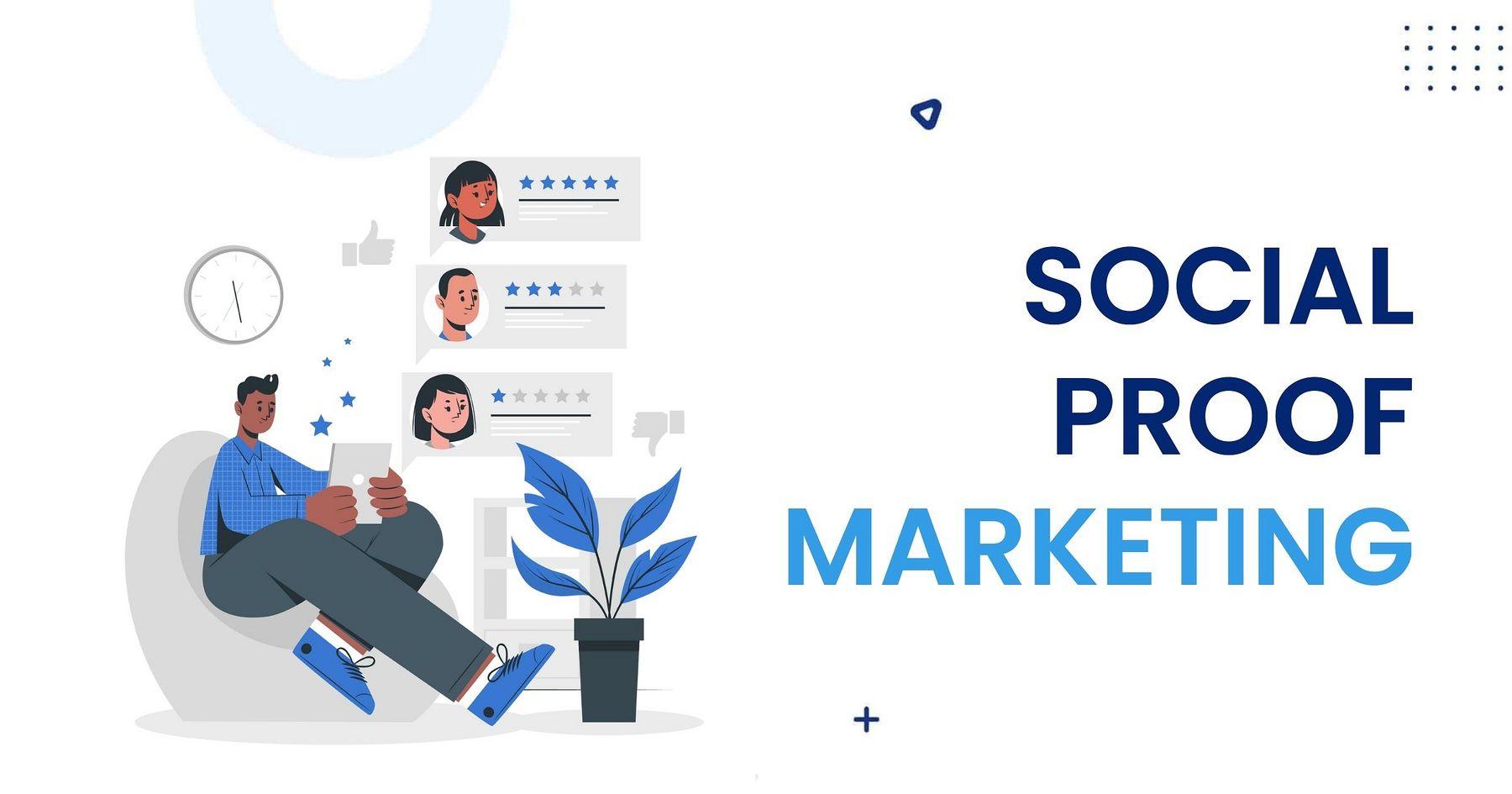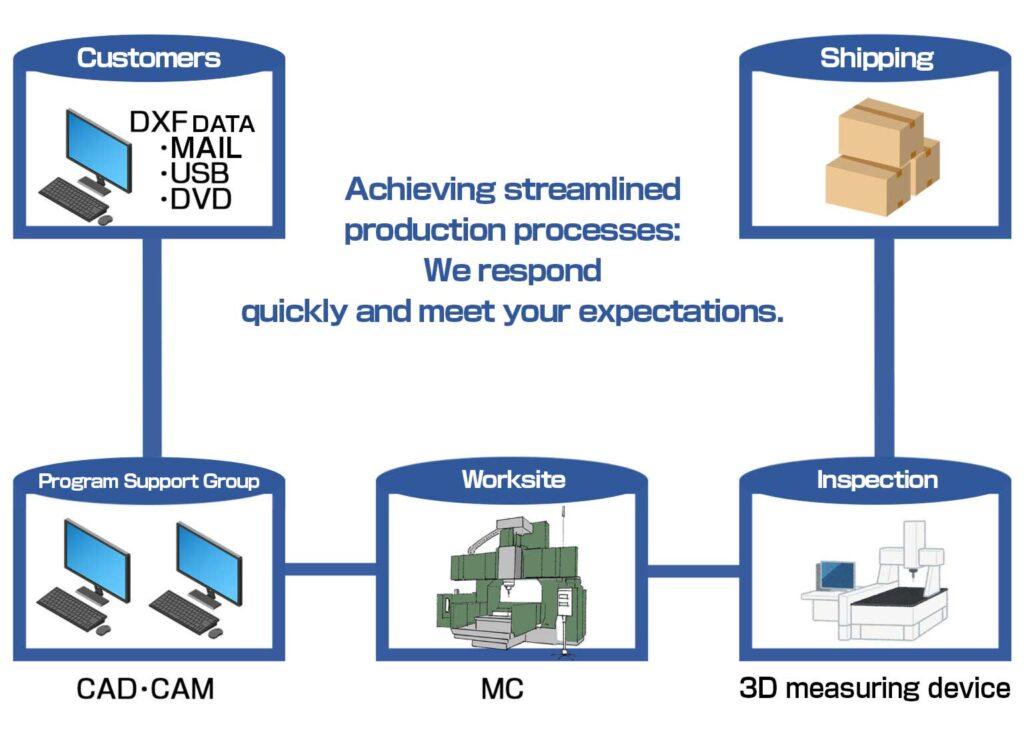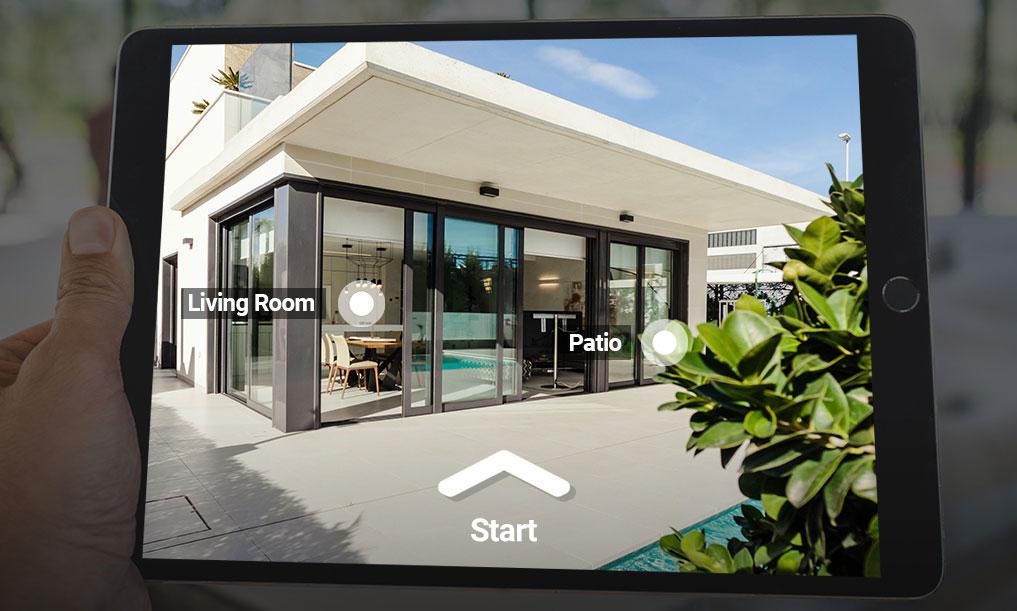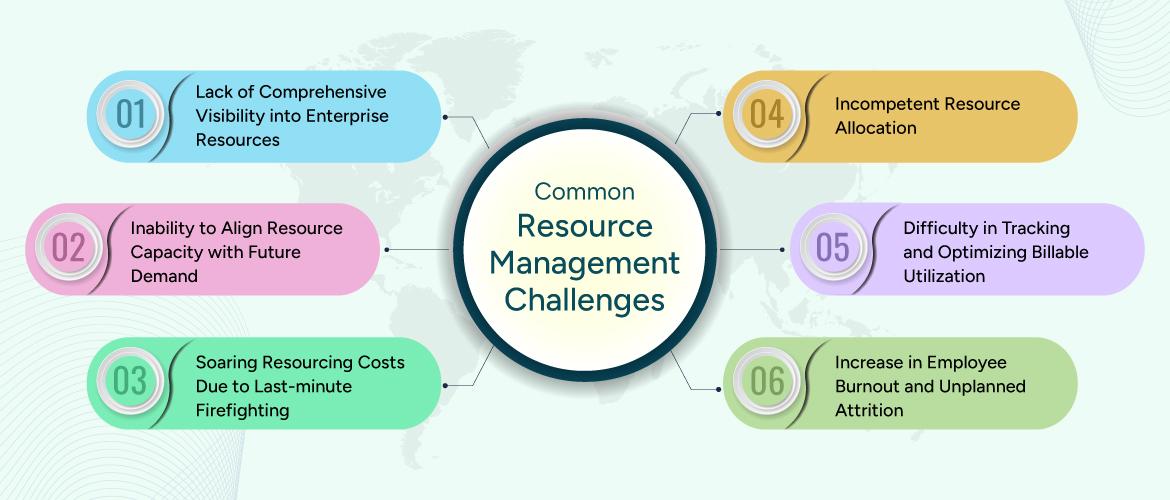Elevate your real estate agency by mastering web design! A captivating, user-friendly website not only showcases your listings but also builds trust and engages potential clients. Transform your online presence and watch your leads soar—your future awaits!
Mastering Real Estate Web Design: How Agencies Can Capture More Leads Online
In today’s digital landscape, where first impressions are often made online, the importance of a captivating web presence cannot be overstated—especially in the competitive world of real estate. For agencies striving to stand out and attract more leads, mastering real estate web design is not just a luxury; it’s an imperative. Imagine a website that not only showcases properties but also tells a story—one that resonates with potential buyers and sellers alike. In this article, we will explore the transformative power of effective web design and reveal strategies that can elevate your agency from obscurity to prominence. By harnessing the nuances of user experience, visual appeal, and cutting-edge technology, your agency can create an online environment that not only draws in visitors but also converts them into loyal clients. Join us on this journey to unlock the secrets of real estate web design and discover how you can capture more leads and thrive in an ever-evolving market. Your future clients are searching online—let’s ensure they find you first.
Harnessing the Power of First Impressions in Real Estate Web Design
In the realm of real estate, the importance of first impressions cannot be overstated. When potential clients land on your website, they form an opinion within mere seconds. This initial perception can either open doors to new opportunities or lead them to click away in search of something more appealing. Therefore, creating a visually stunning and user-friendly web design is crucial for real estate agencies looking to capture and retain leads.
To harness this power effectively, consider the following design elements:
- Visual Appeal: High-quality images and videos of properties can instantly captivate visitors. Use full-screen backgrounds and photo galleries that showcase your listings in the best light.
- Intuitive Navigation: Ensure that your website is easy to navigate. A well-structured menu allows users to find what they’re looking for without frustration, enhancing their experience and encouraging longer visits.
- Responsive Design: With an increasing number of users browsing on mobile devices, a responsive design is essential. Ensure your site adapts seamlessly to various screen sizes, maintaining functionality and aesthetics.
- Engaging Content: Beyond listings, consider adding a blog or resources section where potential clients can find valuable information about the real estate market, buying tips, and local community insights.
Another critical aspect of first impressions is the speed of your website. Slow-loading pages can deter potential leads before they even engage with your content. Optimize images and utilize efficient coding practices to ensure your site loads quickly, keeping users interested and minimizing bounce rates.
Consider implementing lead capture forms strategically throughout your site. Position these forms where they feel natural and unobtrusive, such as:
| Location | Description |
|---|---|
| Homepage | Offer a newsletter sign-up or a free property guide to capture emails. |
| Property Listings | Include a contact form for inquiries directly on listing pages. |
| Blog Posts | Encourage comments or questions to engage visitors further. |
Lastly, don’t underestimate the impact of testimonials and case studies. Displaying reviews and success stories prominently on your site can build credibility and trust. Potential clients are more likely to engage with an agency that showcases satisfied customers, reinforcing the notion that they can expect similar positive experiences.
by strategically leveraging the elements that influence first impressions, real estate agencies can create a powerful online presence that not only attracts leads but also converts them into lasting clients. The goal is to create a digital space that resonates with visitors, making them feel confident and inspired to take the next step in their real estate journey.
Creating a User-Centric Experience that Converts Visitors into Leads
User-Centric Design Principles
To create a user-centric experience, it’s essential to understand your audience’s needs and pain points. Implementing a design that resonates with your visitors is key to driving engagement and converting them into leads. Here are some critical principles to consider:
- Intuitive Navigation: Make it easy for users to find what they’re looking for. A clean, structured menu reduces bounce rates and keeps visitors on your site longer.
- Responsive Design: Ensure your website is mobile-friendly. A significant portion of real estate searches occurs on mobile devices, so a seamless experience across all platforms is vital.
- Compelling Calls to Action: Strategically place calls to action throughout your site. Use persuasive language that encourages visitors to take the next step, whether it’s signing up for a newsletter or scheduling a showing.
Building Trust and Credibility
Establishing trust is crucial in the real estate market. Visitors are more likely to become leads if they feel confident in your brand. Here are effective strategies to build credibility:
- High-Quality Content: Provide valuable resources such as market reports, guides, and blogs that address common concerns and questions.
- Testimonials and Reviews: Showcase satisfied clients on your website. Authentic testimonials enhance your credibility and reassure potential buyers.
- Professional Design: A polished, visually appealing website reflects professionalism and attention to detail, fostering trust among visitors.
Engaging Visuals and User Interactivity
Visual content plays a significant role in user engagement. Utilize stunning visuals and interactive elements to keep visitors interested:
- High-Resolution Images: Use captivating images of properties and neighborhoods to create an emotional connection with potential buyers.
- Virtual Tours: Offer 360-degree views or video walkthroughs to allow users to experience properties remotely, increasing their likelihood of inquiry.
- Interactive Maps: Implement maps that highlight key features of neighborhoods, such as schools, parks, and public transport, to provide valuable context for potential buyers.
Data-Driven Insights
Utilizing analytics helps refine your approach to lead generation. Track user behavior to understand what works and what doesn’t. Here’s how to leverage data:
| Metric | Purpose |
|---|---|
| Bounce Rate | Identify pages that need improvement to keep visitors engaged. |
| Conversion Rate | Measure the effectiveness of your calls to action and overall lead capture. |
| Traffic Sources | Determine which channels bring the most visitors and optimize your marketing efforts accordingly. |
By focusing on a user-centric design, improving trust, employing engaging visuals, and leveraging data-driven insights, real estate agencies can create websites that not only attract visitors but also convert them into valuable leads.
Optimizing Your Website for Mobile to Capture On-the-Go Clients
In today’s fast-paced world, a significant number of potential clients are browsing the internet on their mobile devices. To stay competitive in the real estate market, agencies must prioritize mobile optimization, ensuring that their websites are not only accessible but also engaging for users on the go.
Responsive Design is key. A responsive website automatically adjusts its layout according to the screen size and orientation, providing a seamless experience across all devices. This adaptability not only improves user experience but also boosts your website’s SEO ranking. Consider the following elements:
- Fluid Grids: Use flexible images and layouts that expand and contract based on the user’s device.
- Media Queries: Implement CSS media queries to apply different styles for various screen sizes.
- Touch-Friendly Navigation: Ensure that buttons and links are easy to tap, minimizing the chances of user frustration.
Another critical aspect is fast loading times. With impatient users, a slow website can lead to high bounce rates. Optimize your website by:
- Compressing Images: Use image formats like WebP for quicker loading without sacrificing quality.
- Minifying CSS and JavaScript: Reduce file sizes to improve loading speeds.
- Using Browser Caching: Allow users to store elements of your site locally, which speeds up future visits.
The incorporation of location-based services can also enhance user experience. By leveraging GPS technology, you can offer clients:
- Property Listings: Show properties near their current location.
- Directions: Provide easy access to directions to open houses or showings.
- Neighborhood Insights: Share information about nearby amenities, schools, and public transport.
To further engage mobile users, consider implementing call-to-action buttons that are prominently displayed and easy to access. Examples include:
| Action | Purpose |
|---|---|
| Schedule a Tour | Encourages potential buyers to take the next step. |
| Request More Info | Captures leads for follow-up. |
| Sign Up for Alerts | Keeps clients informed about new listings or price changes. |
don’t underestimate the power of engaging content. Use concise, impactful messaging that resonates with your audience. Incorporate visuals such as videos and infographics to capture attention quickly. Remember, the easier you make it for clients to navigate your site and find what they need, the more likely they are to convert into leads.

Utilizing High-Quality Imagery to Showcase Properties Effectively
In the realm of real estate, first impressions are everything. High-quality imagery serves as the cornerstone of effective property showcasing, significantly influencing potential buyers’ decisions. When visitors land on your website, captivating visuals can evoke emotional connections, drawing them deeper into your listings and ultimately leading to higher conversion rates.
Utilizing professional photography not only highlights the unique features of a property but also emphasizes the overall atmosphere and lifestyle it offers. Consider the following elements to enhance your property imagery:
- Natural Lighting: Capture images during the golden hour for a warm and inviting ambiance.
- Wide-Angle Shots: Use wide-angle lenses to provide a comprehensive view of rooms, making them appear more spacious.
- Staging: Professionally stage properties to showcase their full potential, allowing buyers to visualize themselves in the space.
- Exterior Views: Highlight the surrounding environment, emphasizing nearby amenities and the neighborhood’s charm.
Beyond photography, integrating virtual tours and 360-degree views can elevate the user experience. These immersive tools allow potential buyers to navigate the property at their own pace, offering a sense of presence that static images simply cannot achieve. This interactive approach not only keeps visitors engaged but also builds trust, as they can explore every corner without the pressure of a guided tour.
To further enhance your web design, consider the importance of image optimization. Fast loading times are crucial for retaining visitors. Implementing responsive images ensures that your visuals maintain their quality across all devices. Here’s a quick comparison of image formats to consider:
| Image Format | Best Use | Pros | Cons |
|---|---|---|---|
| JPEG | Photographs | High quality, smaller file size | Lossy compression may reduce quality |
| PNG | Graphics & logos | Supports transparency, high quality | Larger file size |
| WEBP | Web images | Smaller file size with good quality | Not universally supported |
don’t underestimate the power of user-generated content. Encourage satisfied clients to share their experiences and images of their new homes. This not only creates authenticity but also fosters community engagement around your brand. Featuring these images on your website or social media channels can enhance credibility and inspire prospective buyers to envision their own story within your listings.
Incorporating Engaging Content that Speaks to Your Audience’s Needs
To truly resonate with your audience, it’s essential to understand their specific needs and desires. Real estate is not merely about properties; it’s about the dreams and aspirations tied to those properties. When designing your website, consider incorporating elements that speak directly to these emotions. Create content that tells stories, showcasing the journey of past clients who found their perfect homes through your agency.
Your website should be a hub of information that addresses common questions and concerns. Consider featuring a resource center where visitors can find:
- Guides on buying/selling homes
- Market analysis reports
- Neighborhood insights
- FAQs about mortgages and financing
Infographics and short videos can enhance user engagement. Visual content not only captures attention but also makes complex information easier to digest. For instance, create a simple infographic that breaks down the home buying process into easy steps. This will not only educate your potential clients but also position you as a knowledgeable resource in the industry.
Implementing a blog on your site can also serve as a powerful tool for addressing audience needs. Regularly updated blog posts that cover market trends, tips for home buyers, and spotlight features on local businesses can engage visitors and keep them returning for more. Aim for a tone that is both informative and relatable, making your audience feel understood and connected.
Another effective strategy is to incorporate client testimonials and case studies prominently on your site. By showcasing real stories and experiences, you validate the effectiveness of your services. Consider creating a dedicated section or even a rotating slider that highlights success stories, emphasizing how your agency helped clients navigate the complexities of real estate.
Don’t underestimate the power of personalized content. Utilize data analytics to segment your audience and tailor your messaging accordingly. For example, if you identify a group interested in luxury properties, create targeted landing pages that highlight your expertise in that niche. This level of personalization can dramatically increase your conversion rates.
| Content Type | Purpose | Format |
|---|---|---|
| Blog Posts | Educate and inform potential clients | Articles or videos |
| Guides | Provide valuable insights on processes | PDF downloads or web pages |
| Testimonials | Build trust and credibility | Text or video |
| Infographics | Simplify complex information | Visual content |
By creating a website that prioritizes engaging content, you will not only capture the attention of your audience but also nurture a sense of loyalty and trust. Each element should be thoughtfully designed to guide visitors through their real estate journey, ultimately leading them to choose your agency as their trusted partner.

Implementing Robust SEO Strategies to Increase Online Visibility
In today’s digital landscape, robust SEO strategies are essential for real estate agencies aiming to enhance their online presence. With the right approach, you can significantly improve your website’s visibility and attract potential clients looking for their dream homes.
One of the foundational elements of effective SEO is keyword research. By identifying and utilizing targeted keywords that potential buyers are searching for, agencies can tailor their content to meet these demands. Consider the following strategies:
- Focus on long-tail keywords, such as ”luxury homes in [city]” or “affordable apartments near [landmark].”
- Incorporate local SEO tactics by optimizing Google My Business listings and including local keywords in your website content.
- Regularly update your content to reflect current market trends and seasonal demands.
Another crucial aspect is on-page SEO optimization. This includes optimizing individual pages of your website for better search engine rankings. Key actions to consider are:
- Using engaging title tags and meta descriptions that include primary keywords.
- Ensuring that images are optimized with alt text that describes the property or service accurately.
- Improving page load speed by compressing images and leveraging browser caching.
Moreover, backlinks from reputable sources are vital for building your site’s authority. Establishing partnerships with local businesses, engaging in guest blogging, and participating in real estate forums can help in acquiring valuable links. A strong backlink profile indicates to search engines that your website is a trusted source of information.
The user experience (UX) of your website plays a pivotal role in SEO. A well-designed, responsive site that is easy to navigate not only keeps visitors engaged but also encourages them to convert into leads. Consider implementing:
- A mobile-friendly design that adapts seamlessly to various devices.
- Clear calls-to-action (CTAs) to guide users toward key conversion points.
- Intuitive navigation that allows users to find listings and resources quickly.
Lastly, leveraging analytics tools is essential for measuring the success of your SEO initiatives. By examining metrics such as organic traffic, bounce rates, and conversion rates, you can refine your strategies and make data-driven decisions. Regularly assess your performance and adjust your tactics accordingly to stay ahead in the competitive real estate market.

Leveraging Calls-to-Action that Drive Engagement and Lead Generation
In the competitive realm of real estate, calls-to-action (CTAs) are indispensable tools that can significantly enhance your website’s ability to engage visitors and convert them into leads. By strategically placing persuasive CTAs throughout your site, you can guide potential clients along their journey, making it seamless and intuitive for them to take the next step.
To maximize the effectiveness of your CTAs, consider the following strategies:
- Clarity is Key: Ensure your CTAs are clear and concise. Phrases like “Get Your Free Market Analysis” or “Schedule a Viewing Today” instantly communicate the action you want visitors to take.
- Eye-Catching Design: Use contrasting colors and bold fonts to make your CTAs stand out. A well-designed button can draw attention and encourage clicks.
- Placement Matters: Position CTAs strategically throughout your site, especially on high-traffic pages like property listings and blog articles. Consider placing them both above the fold and at the end of content.
- Incorporate Urgency: Use time-sensitive language, such as “Limited Time Offer” or “Only 5 Spots Left,” to create a sense of urgency and motivate visitors to act quickly.
Moreover, testing different variations of your CTAs can lead to improved engagement rates. A/B testing allows you to experiment with different phrases, designs, and placements to determine what resonates best with your audience. Monitor the performance of each variation to refine your approach and achieve optimal results.
Consider using a dynamic approach to personalize CTAs based on user behavior. For instance, if a visitor has been browsing luxury properties, a tailored CTA like “Explore More Luxury Listings” can enhance relevance, thereby increasing the likelihood of conversion.
In addition, integrating lead capture forms directly within your CTAs can streamline the process. Instead of redirecting users to another page, allow them to fill out a quick form without losing their place on the site. This hassle-free experience can significantly boost your lead generation efforts.
Implementing these tactics thoughtfully will not only enhance user experience but also cultivate trust and credibility with your audience. By empowering potential clients to engage with your content meaningfully, you lay the groundwork for successful lead generation and long-term relationships.

Integrating Social Proof to Build Trust and Credibility with Prospects
In the competitive landscape of real estate, establishing trust and credibility with potential clients is paramount. One of the most effective ways to achieve this is through the integration of social proof on your website. Social proof serves as a powerful tool that showcases your agency’s reputation and the positive experiences of past clients, instilling confidence in prospects.
Consider incorporating the following elements to enhance your website’s appeal:
- Client Testimonials: Display authentic reviews and testimonials prominently on your homepage and landing pages. Use real names and images (with permission) to humanize the feedback and make it relatable.
- Case Studies: Highlight successful transactions or satisfied clients through detailed case studies. Share the challenges faced, solutions provided, and the outcomes achieved, showcasing your expertise and commitment.
- Trust Badges: Include logos of professional organizations, certifications, or awards your agency has received. These visual cues can significantly enhance your credibility and reassure prospects about your professionalism.
Another effective strategy is to showcase your agency’s social media presence. Embed live feeds from platforms like Instagram or Facebook that display your latest property listings and happy client moments. This not only keeps your content fresh but also demonstrates an active and engaged community that trusts your services.
| Social Proof Element | Purpose | Impact |
|---|---|---|
| Client Testimonials | Build trust through personal stories | Increased conversion rates |
| Case Studies | Showcase expertise in handling real estate challenges | Enhanced credibility |
| Trust Badges | Reinforce professionalism | Higher engagement |
Don’t underestimate the power of visual storytelling. Incorporate before-and-after videos or photo galleries of successfully staged homes or properties that sold quickly. These visuals not only captivate attention but also provide tangible evidence of your agency’s effectiveness.
Lastly, remember that fostering a sense of community can be incredibly effective. Encourage your satisfied clients to share their stories on social media and tag your agency. This not only amplifies your reach but also leverages the power of their networks to build trust with new prospects.

Utilizing Data Analytics to Understand User Behavior and Adapt Accordingly
In the competitive landscape of real estate, understanding user behavior is crucial for agencies aiming to optimize their web design and capture more leads. By leveraging data analytics, agencies can gain invaluable insights into how potential clients interact with their websites. This knowledge allows for strategic adjustments that can significantly enhance user experience and increase conversion rates.
Consider the following key data points that analytics can reveal:
- User demographics: Knowing the age, location, and interests of your visitors helps tailor content and design to meet their preferences.
- Traffic sources: Understanding where your visitors come from (social media, search engines, referrals) enables you to focus your marketing efforts effectively.
- Page performance: Tracking which pages retain users’ attention or cause them to bounce can inform necessary design tweaks.
- User behavior flow: Analyzing navigation patterns shows how visitors move through your site, highlighting areas that may need improvement.
With these insights in hand, agencies can implement targeted strategies to adapt their websites. For instance, if analytics show that a significant number of visitors drop off at the property listings page, it may indicate that the information is overwhelming or not engaging enough. By simplifying the layout or enhancing the visuals, agencies can foster deeper engagement and keep potential buyers interested.
Another powerful aspect of utilizing data analytics is the ability to conduct A/B testing. This method allows agencies to experiment with different design elements—such as call-to-action buttons, images, or layout styles—and measure their effectiveness. By continuously refining the user interface based on real-time feedback, agencies can create a more intuitive and compelling browsing experience.
To further illustrate the impact of data-driven decisions, consider the following table showcasing common changes made based on analytics insights:
| Change Made | Reason Based on Analytics | Expected Outcome |
|---|---|---|
| Improved mobile responsiveness | High bounce rate on mobile | Increased mobile engagement |
| Enhanced property images | Low interaction with listings | Higher click-through rates |
| Streamlined contact forms | High abandonment rate | More lead submissions |
Ultimately, embracing data analytics equips real estate agencies with the power to not only understand their users but also adapt in real-time. By fostering a culture of experimentation and continuous improvement, agencies can create a compelling online environment that not only captivates potential clients but also translates to more leads and successful transactions.

Creating a Streamlined Inquiries Process to Simplify Client Interaction
In the fast-paced world of real estate, simplifying client interactions can significantly enhance your agency’s efficiency and client satisfaction. By creating a streamlined inquiries process, you not only make it easier for potential clients to reach out, but you also position your agency as a responsive and client-centric organization. Here are several strategies to consider:
- Implement a Smart Inquiry Form: Design your inquiry form to capture essential information without overwhelming potential clients. Use dropdown menus, checkboxes, and conditional fields to guide users through the process smoothly.
- Utilize Chatbots: Integrate AI-powered chatbots on your website to provide instant responses to common questions. This 24/7 availability can help capture leads even outside business hours.
- Offer Multiple Contact Methods: Allow clients to choose their preferred way to connect with you—be it through email, phone, or social media. This flexibility increases the likelihood of engagement.
- Follow Up Efficiently: Once a potential client makes an inquiry, develop a follow-up system that ensures timely responses. Automating emails or texts can save time while keeping your agency top-of-mind.
Additionally, consider the role of technology in enhancing your inquiries process. A well-designed CRM can help manage client interactions efficiently, ensuring that no lead falls through the cracks. Here’s how technology can streamline your inquiries:
| Technology | Benefits |
|---|---|
| CRM Systems | Organize leads, track interactions, and set reminders for follow-ups. |
| Lead Generation Tools | Capture leads through landing pages and optimized forms. |
| Email Automation | Send personalized responses and nurture leads over time. |
don’t underestimate the power of feedback. After a client interaction, consider sending a brief survey to assess their experience with your inquiries process. This will not only provide valuable insights into areas for improvement but also demonstrate your commitment to client satisfaction. By continually refining your approach based on real user feedback, you can create a client experience that is not only streamlined but truly exceptional.

Incorporating Virtual Tours and Video Content to Enhance Listings
In today’s competitive real estate market, having a robust online presence is essential. One of the most effective ways to stand out is by incorporating virtual tours and video content into your property listings. These interactive elements not only engage potential buyers but also offer them a more immersive experience, allowing them to visualize living in the space.
Benefits of Virtual Tours:
- Enhanced Engagement: Virtual tours captivate viewers, keeping them on your page longer and increasing the likelihood of inquiries.
- Convenience: Buyers can explore properties at their own pace, making it easier for them to shortlist homes without the need for multiple physical visits.
- Global Reach: Utilize virtual tours to attract international buyers or those relocating, broadening your target audience significantly.
Video content is equally crucial. A well-produced property video can showcase not just the home itself but also the surrounding neighborhood, promoting lifestyle appeal. By presenting a narrative that highlights unique features, local amenities, and community vibes, you create a compelling story that resonates with buyers.
Key Elements for Effective Video Content:
- High-Quality Production: Invest in professional videography to ensure that your videos reflect the quality of the listings.
- Authentic Storytelling: Craft a narrative that connects emotionally with viewers, helping them envision their future in the home.
- Call to Action: Encourage viewers to take the next step, whether that’s scheduling a showing or contacting your agency for more information.
To illustrate the impact of these strategies, consider the following comparison:
| Traditional Listings | Listings with Virtual Tours & Video |
|---|---|
| Static images and descriptions | Interactive 3D tours and engaging videos |
| Limited buyer engagement | Higher engagement and retention rates |
| Potentially lower conversion rates | Increased inquiries and faster sales |
Incorporating these elements into your listings not only enhances the aesthetic appeal but also provides essential information in an easily digestible format. The integration of technology in real estate marketing is not just a trend; it’s a necessary evolution. Embrace it, and watch as your conversion rates soar.

Designing a Comprehensive Resources Section to Educate and Empower Clients
Creating a dedicated resources section on your real estate website can be a game changer in how you interact with potential clients. This section not only serves as a hub of information but also builds trust and positions your agency as an authority in the industry. Here are a few key elements to incorporate:
- Guides and E-books: Offer downloadable materials that cover essential topics like buying a home, selling a property, or understanding market trends. These resources showcase your expertise and provide immense value to prospective clients.
- Market Reports: Regularly update your visitors with detailed reports on local real estate markets. This data-driven approach helps clients make informed decisions and reinforces your role as a knowledgeable resource in the field.
- Video Tutorials: Create engaging video content that explains complex real estate processes. From virtual tours to investment tips, video can simplify information and enhance user engagement.
- FAQs: Anticipate your clients’ questions by compiling a comprehensive FAQ section. Address common concerns regarding transactions, financing, and property management to demonstrate your commitment to client education.
In addition to these resources, consider implementing an interactive element to your section. For example, a Real Estate Glossary could help demystify industry jargon for first-time buyers. A simple table can succinctly define terms that clients often encounter:
| Term | Definition |
|---|---|
| Escrow | A financial arrangement where a third party holds funds until conditions of the deal are met. |
| Closing Costs | Fees associated with the purchase of a property, usually paid at closing. |
| Contingency | A condition that must be met before a real estate contract becomes binding. |
By thoughtfully curating a resources section, you not only empower your clients with the information they need but also foster a sense of community and support. As they progress through their real estate journey, they will appreciate having a trusted partner who cares about their success. This connection will make them more likely to choose your agency over competitors, ultimately leading to increased leads and conversions.
don’t forget to promote your resources across your social media channels and email newsletters. By consistently sharing valuable content, you further establish your agency as a go-to for real estate knowledge, encouraging potential clients to engage with your services and, ultimately, convert into loyal clients.

Staying Ahead of Design Trends to Keep Your Agency Competitive
In the fast-evolving landscape of real estate web design, staying ahead of trends is not just an option; it’s a necessity. Agencies that are proactive in adopting the latest design strategies will not only enhance their visibility but also significantly increase their lead generation capabilities. Here’s how to stay at the forefront of this competitive field:
- Embrace Minimalism: Clean, minimalist designs are gaining traction. Less clutter means faster loading times and a better user experience. Ensure your site focuses on essential elements, allowing listings and calls-to-action to shine.
- Mobile-First Approach: With more users browsing on mobile devices, designing with a mobile-first mentality is crucial. Prioritize responsive design that offers a seamless experience across all devices.
- Integrate Video Content: Video showcases properties in a dynamic way that static images cannot. Consider adding virtual tours and video testimonials to engage potential buyers more effectively.
- Utilize Bold Typography: Clear, bold fonts not only enhance readability but also add character to your site. Pair contrasting typefaces to create a unique visual identity.
- Focus on Local SEO: Tailor your content to target local audiences. Use location-based keywords and create content that speaks directly to the needs of your community.
Adopting these trends will not only improve your website’s aesthetics but also enhance functionality. The ultimate goal is to provide an experience that converts visitors into leads. To visualize the impact of these strategies, refer to the table below, which outlines the benefits of each trend:
| Design Trend | Benefits |
|---|---|
| Minimalism | Faster load times, improved focus on listings |
| Mobile-First | Seamless browsing experience, higher user engagement |
| Video Content | Enhanced property showcases, increased interest |
| Bold Typography | Improved readability, stronger brand identity |
| Local SEO | Increased visibility in local searches, targeted audience reach |
By continually evaluating and updating your web design strategies, your agency will not only keep pace with competitors but will also create a memorable online presence that resonates with potential clients. The digital landscape is dynamic, and adapting to its changes is key to unlocking opportunities and driving growth in the real estate sector.
Frequently Asked Questions (FAQ)
Q&A: Mastering Real Estate Web Design: How Agencies Can Capture More Leads Online
Q1: Why is web design crucial for real estate agencies looking to capture more leads?
A1: In today’s digital landscape, your website is often the first impression potential clients will have of your agency. A well-designed website not only reflects your brand’s professionalism but also enhances user experience, making it easier for visitors to find information and engage with your services. A stunning, user-friendly web design can significantly boost your credibility, encourage visitors to stay longer, and ultimately convert them into leads.
Q2: What are the key elements of effective real estate web design?
A2: Effective real estate web design encompasses several critical elements:
- Responsive Design: Your site must perform seamlessly across devices—smartphones, tablets, and desktops—to cater to the diverse needs of your audience.
- High-Quality Visuals: Use stunning images and videos of properties to captivate visitors. Visual content is more engaging and helps showcase properties more effectively.
- Clear Navigation: A logical and intuitive navigation structure ensures visitors can easily find the information they seek, which is vital for keeping them engaged.
- Lead Capture Forms: Strategically placed contact forms and call-to-action buttons enable you to capture leads without overwhelming visitors.
- SEO Optimization: Implementing SEO best practices helps your site rank higher in search results, driving more organic traffic to your site and increasing lead generation potential.
Q3: How can real estate agencies leverage their website to showcase their expertise?
A3: Your website can serve as a powerful platform to demonstrate your industry knowledge and expertise. Consider integrating a blog where you share market trends, home buying tips, and community insights. Including case studies and testimonials can also build trust and showcase your successful transactions. This not only establishes your authority but also keeps potential clients engaged and informed, making them more likely to choose your agency when they’re ready to make a move.
Q4: What role does user experience play in lead generation?
A4: User experience (UX) is paramount in web design. A positive UX ensures that visitors can easily navigate your site, find relevant information quickly, and enjoy their overall experience. This includes fast loading times, mobile optimization, and an aesthetically pleasing design. When users have a pleasant experience, they’re more likely to return, recommend your site to others, and ultimately reach out for your services. Conversely, a poor UX can drive potential leads away before they ever engage with your brand.
Q5: How can agencies track the effectiveness of their web design in capturing leads?
A5: Agencies can track their web design effectiveness through various analytics tools like Google Analytics. By monitoring metrics such as bounce rate, average session duration, and conversion rates, you can gain insights into how visitors interact with your site. A/B testing different layouts, call-to-action placements, and content types can also provide valuable data on what resonates best with your audience. This iterative approach allows you to continuously refine your design and marketing strategies to optimize lead capture.
Q6: What is the most important takeaway for agencies looking to enhance their web design?
A6: The most important takeaway is that mastering web design is an ongoing journey, not a one-time effort. By prioritizing user experience, investing in high-quality visuals, and leveraging effective marketing strategies, you can create a compelling online presence that not only attracts but also retains potential clients. Remember, a beautifully designed website is more than just aesthetics; it’s a powerful tool for fostering connections and driving your agency’s success. Embrace the potential of web design and watch your leads flourish!
In Summary
As we conclude our exploration of mastering real estate web design, it’s clear that the digital landscape offers immense potential for agencies willing to innovate and adapt. Your website is more than just a digital storefront; it’s a powerful tool that can transform casual visitors into committed clients. By implementing the strategies discussed, you can create a compelling online presence that not only showcases your properties but also builds trust and fosters lasting relationships.
Remember, every detail matters—from intuitive navigation and stunning visuals to optimized SEO and engaging content. Each element plays a crucial role in enhancing user experience and driving conversions. So, take the leap and invest in a web design that reflects your brand’s essence and speaks directly to the needs of your audience.
In this competitive market, those who embrace change and prioritize user experience will lead the pack. Now is the time to elevate your agency’s online presence and capture more leads than ever before. Your dream clients are just a click away—make sure your website is ready to welcome them with open arms. The future of your business starts with your next web design decision; let it be one that sets you apart and propels you towards success.





